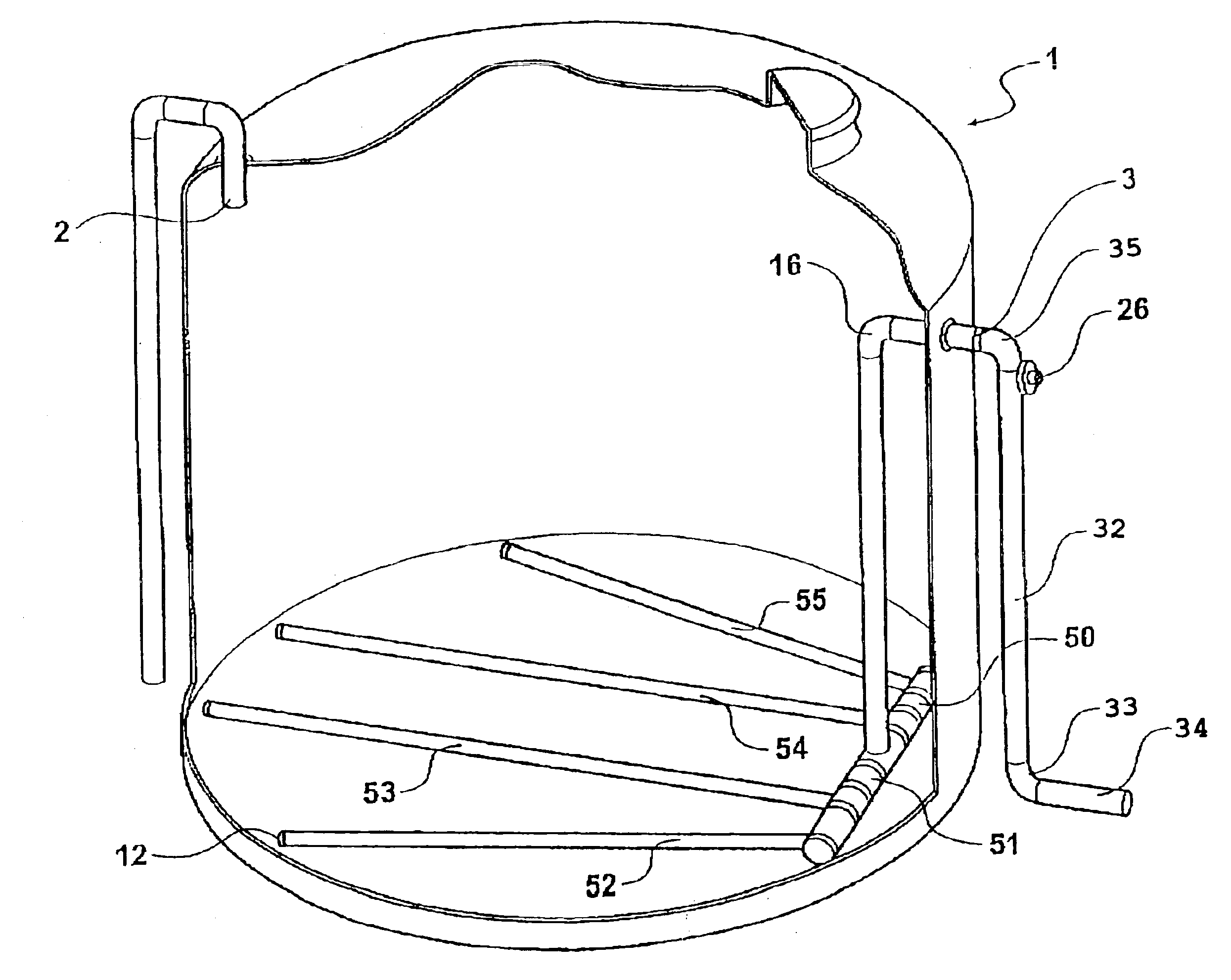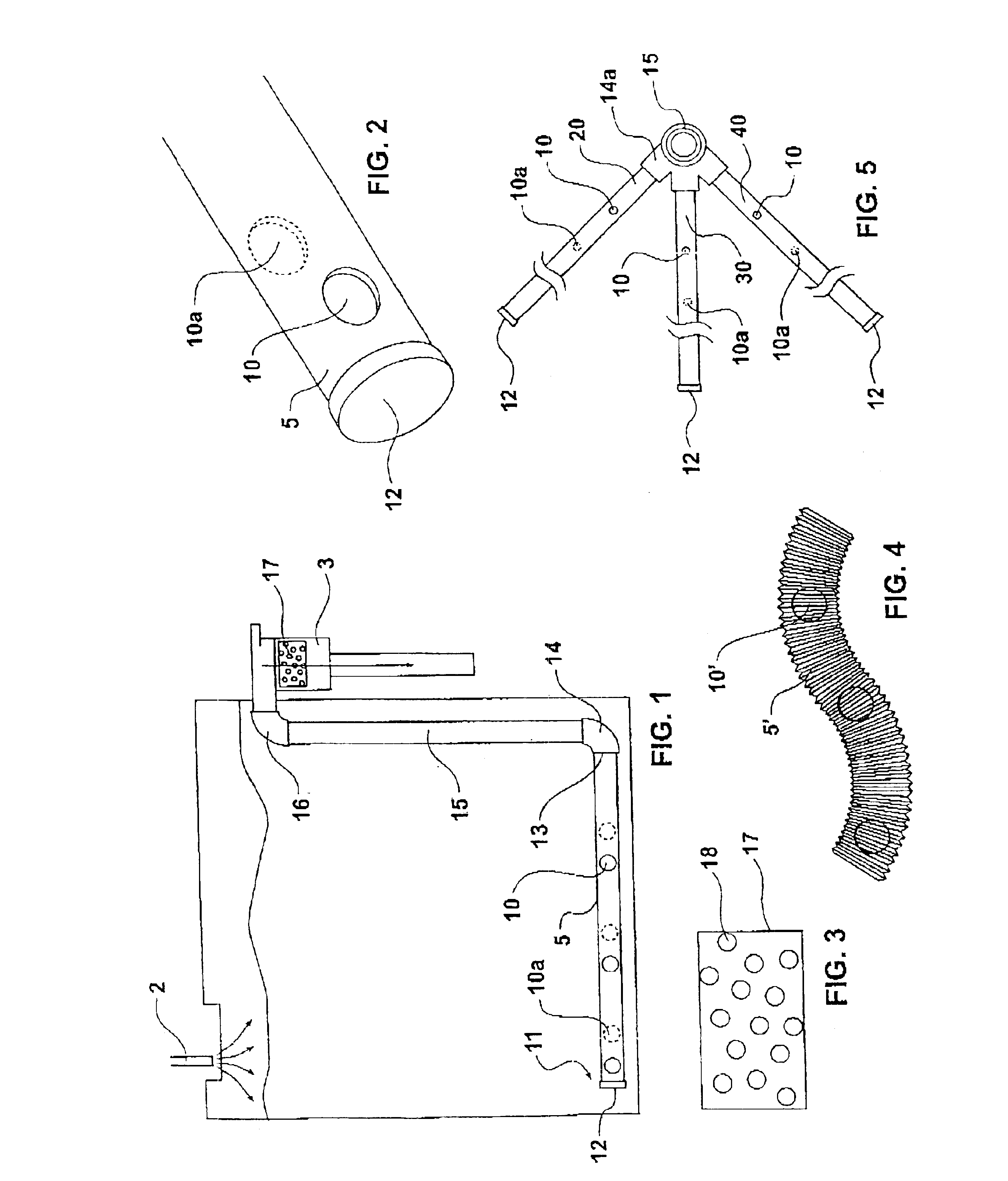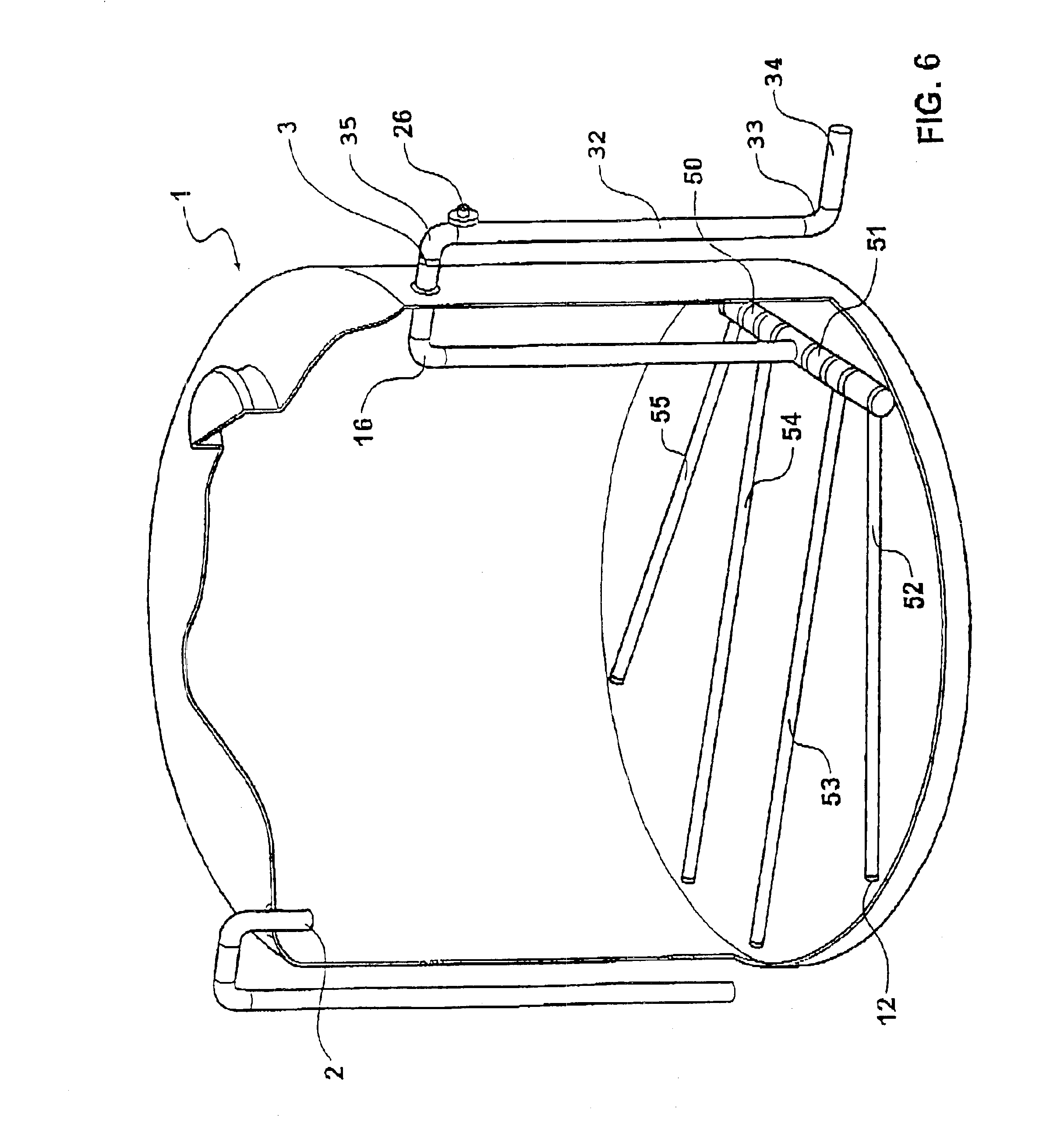Rainwater tank cleaning system
a technology for cleaning systems and rainwater tanks, which is applied in drinking water installations, settling tank feed/discharge, sedimentation settling tanks, etc. it can solve the problems of reducing the reducing the available oxygen in the water, and preventing the accumulation of small particles such as seeds, pollen, road dust, sand and broken parts of leaves and sticks
- Summary
- Abstract
- Description
- Claims
- Application Information
AI Technical Summary
Benefits of technology
Problems solved by technology
Method used
Image
Examples
working example 2
[0045]In a similar manner to Example 1 the invention was trialed on a 4,000 gallon rainwater tank. The only difference was that an 80 mm PVC water pipe was used rather than the 40 mm PVC pipe. Again six holes were drilled in the pipe and sediment was added to the tank. When the tank was caused to overflow, the sediment was drawn out of the tank through the holes in the pipe.
[0046]When water flows from the house roof and enters the inlet 2 of the tank; rather than flowing directly through the outflow 3, the TANK-VAC™ system causes the water at the base of the tank to enter the holes 10 and 10a located in the pipes at the base of the tank 1. The water entering the holes 10 and 10a in the pipe 5 draws in the sediment, plant material, dirt and other particulate solids on the base of the storage tank and by siphon action washes them out through the overflow 3. In this way the fresh water entering the tank is not immediately removed by the overflow and the tank is automatically cleaned.
[0...
PUM
| Property | Measurement | Unit |
|---|---|---|
| diameter | aaaaa | aaaaa |
| diameter | aaaaa | aaaaa |
| diameter | aaaaa | aaaaa |
Abstract
Description
Claims
Application Information
 Login to View More
Login to View More - R&D
- Intellectual Property
- Life Sciences
- Materials
- Tech Scout
- Unparalleled Data Quality
- Higher Quality Content
- 60% Fewer Hallucinations
Browse by: Latest US Patents, China's latest patents, Technical Efficacy Thesaurus, Application Domain, Technology Topic, Popular Technical Reports.
© 2025 PatSnap. All rights reserved.Legal|Privacy policy|Modern Slavery Act Transparency Statement|Sitemap|About US| Contact US: help@patsnap.com



